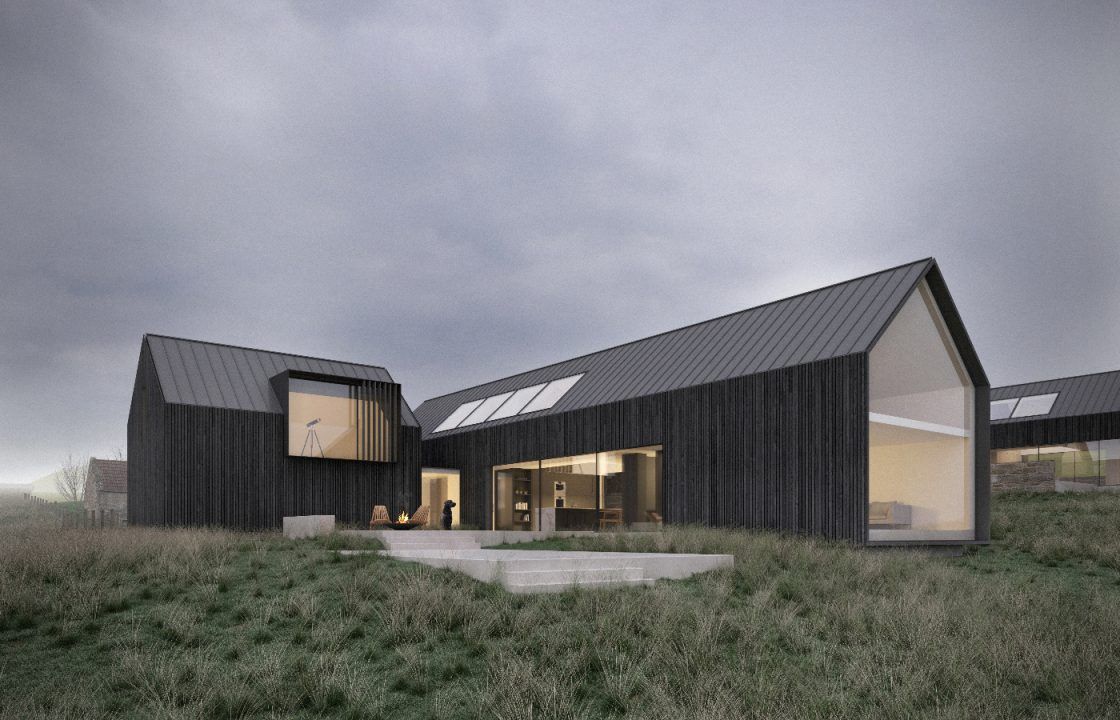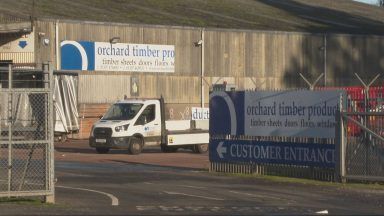Perth and Kinross Council has asked to see how black three new houses will be.
Councillor Richard Watters asked for the planning condition to be incorporated into planning approval for the development at Wester Balgedie Farm, Kinross-shire.
Conservation and planning officers will now be asked to agree the proposed shade is “the right level of blackness”.
Webster Developments applied to Perth and Kinross Council for permission to erect three houses at Wester Balgedie Farm. PKC received 11 letters of objection and 13 letters in support of the application.
The application went before PKC’s Planning and Placemaking Committee on Wednesday, July 12. It was recommended for approval by officers.
Wester Balgedie Farm sits within Wester Balgedie Conservation Area and the Loch Leven and the Lomond Hills Local Landscape Area. The report of handling said the site was accessed from Dryside Road with a further right of way from the B919 – opposite the Balgedie Toll Tavern.
Providing a deputation to the committee on behalf of objecting residents, Mr Milne said there were aspects of the proposal which “significantly challenged the ongoing integrity of the village as a conservation area”. He said the houses would “create a stark black block” on the hillside where the farm sits.
Mr Milne said: “Firstly, the industrial unit style dwellings incorporating non-traditional building materials comprising black wall cladding, black zinc roof sheeting, black window frames and black doors create a stark black block which sits on a very dominant situation in the development and would be seen from the below the A911 and B919.”
His other concerns included the development possibly exacerbating existing storm water flooding issues, “extensive” glazing and the use of solar panels.
He said: “No such installations exist within the village and would be in conflict with conservation.”
Mr Milne confirmed he would be more supportive if the development was more traditional and said: “The development of the site is not at issue.”
Architect Robert Willis from Crichton Lang, Willis and Galloway told councillors: “We believe the materials proposed are appropriate.”
He added: “It was never intended this would be a stark black development. We believe they will provide some blend into the landscape when viewed from the approach.”
He said storm water and surface water issues had been addressed and approved by SEPA and added: “There’s no detrimental impact from the proposal and that’s been accepted.”
Kinross-shire councillor Richard Watters asked how the design – and in particular the colour – would “enhance the ferm toun”.
Mr Willis said: “It’s a very difficult finish for us to communicate the reality of that on site. I think a dark black-stained timber is actually quite a warm material. Sunsets – it will reflect the warmth of the sun. During the day it will reflect the sky.”
He said a black stain was probably the preferable option over black paint “because it still expresses the grain of the wood”.
When Provost Xander McDade asked if solar panels were allowed in a conservation area, a planner explained: “For new developments within conservation areas, it’s on a case by case basis.”
He later added: “We’re quite happy with the positioning indicated on the plans at present.”
The plans were moved for approval – subject to conditions – by convener Ian Massie and seconded by councillor Crawford Reid. They agreed to incorporate an additional planning condition from councillor Watters on the “level of blackness” used.
Tabling the amendment, councillor Watters said: “Just from the colour perspective that there’s a swab or something for approval goes before conservation and planning officers for approval just to get the right level of blackness.”
Councillor Ian James “did not see the point of a condition on colour”.
He said: “I can’t see the point that coming forward with a colour chart or sample is going to make any difference. It’s larch. It’s stained. It will look different on any day.”
He tabled an amendment to approve it as it was but this was rejected as was councillor Bob Brawn’s amendment to refuse the application which went up against the motion as the substantive amendment.
Councillor Brawn said: “It’s a good design but it’s in the wrong place. It’s a tightly controlled conservation area.”
Seconding refusal, councillor Hugh Anderson said: “This gives the chance to get things right and strengthen the design in the conservation area rather than weaken it putting in this modernistic design.”
Councillors voted for approval – with the added planning condition regarding how black it will be – by ten votes to two.
After the meeting architect Robert Willis said: “We’re extremely delighted with the decision, proud of the design and look forward to seeing the project realised.”
Follow STV News on WhatsApp
Scan the QR code on your mobile device for all the latest news from around the country


 LDRS
LDRS






















